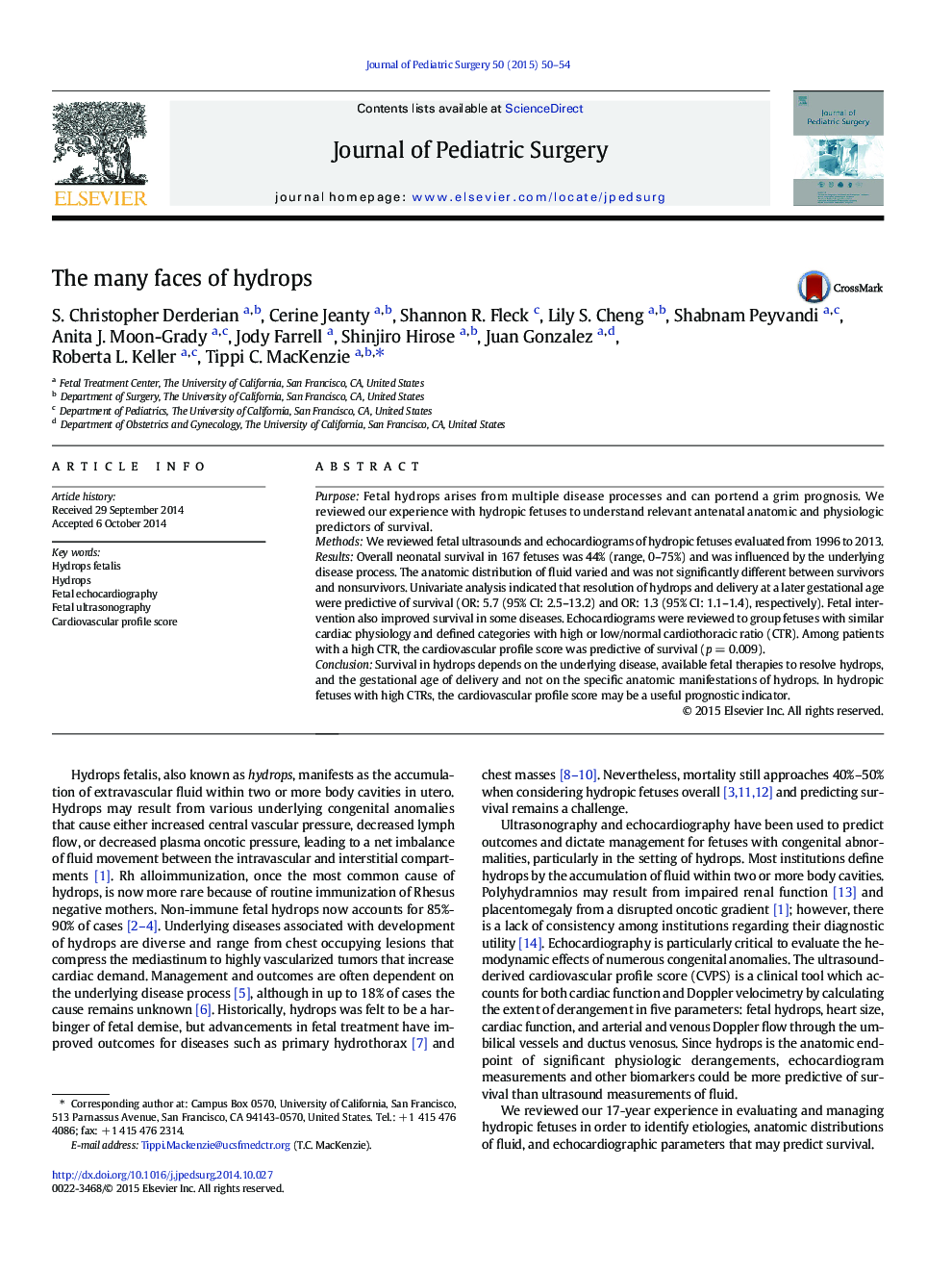| Article ID | Journal | Published Year | Pages | File Type |
|---|---|---|---|---|
| 4155199 | Journal of Pediatric Surgery | 2015 | 5 Pages |
PurposeFetal hydrops arises from multiple disease processes and can portend a grim prognosis. We reviewed our experience with hydropic fetuses to understand relevant antenatal anatomic and physiologic predictors of survival.MethodsWe reviewed fetal ultrasounds and echocardiograms of hydropic fetuses evaluated from 1996 to 2013.ResultsOverall neonatal survival in 167 fetuses was 44% (range, 0–75%) and was influenced by the underlying disease process. The anatomic distribution of fluid varied and was not significantly different between survivors and nonsurvivors. Univariate analysis indicated that resolution of hydrops and delivery at a later gestational age were predictive of survival (OR: 5.7 (95% CI: 2.5–13.2) and OR: 1.3 (95% CI: 1.1–1.4), respectively). Fetal intervention also improved survival in some diseases. Echocardiograms were reviewed to group fetuses with similar cardiac physiology and defined categories with high or low/normal cardiothoracic ratio (CTR). Among patients with a high CTR, the cardiovascular profile score was predictive of survival (p = 0.009).ConclusionSurvival in hydrops depends on the underlying disease, available fetal therapies to resolve hydrops, and the gestational age of delivery and not on the specific anatomic manifestations of hydrops. In hydropic fetuses with high CTRs, the cardiovascular profile score may be a useful prognostic indicator.
